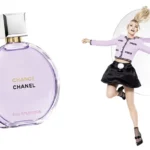
In recent years, the skincare industry has witnessed a resurgence of interest in animal-based products, marking a departure from the previously dominant vegan and plant-based trends.
SKINCARE
This shift is characterized by the revival of traditional ingredients such as beef tallow, snail mucin, and bee venom, which are gaining popularity for their purported skin benefits and natural origins.

The Resurgence of Animal-Based Skincare
Historically, animal-derived substances have been integral to beauty rituals across cultures. Ancient Egyptians utilized animal fats and honey for skin treatments, while Greeks favored donkey milk baths. In Korea, snail mucin has long been esteemed for its hydrating and healing properties. Today, these time-honored ingredients are making a comeback, often rebranded with modern marketing and scientific endorsements.
Beef tallow, once considered an outdated remedy, is now celebrated for its moisturizing properties. Advocates claim that its fatty acid composition closely resembles human sebum, making it effective for treating dry skin and conditions like eczema. Brands such as Notox Skincare have emerged, offering tallow-based products that appeal to consumers seeking natural alternatives to synthetic moisturizers.
Similarly, snail mucin has gained traction beyond its traditional markets, with products like COSRX’s Advanced Snail 92 All in One Cream becoming global bestsellers.
Bee venom, known for its anti-inflammatory properties, has also found a niche among luxury skincare lines, endorsed by celebrities and beauty influencers.
Ethical and Environmental Considerations
The revival of animal-based skincare raises important ethical and environmental questions. While some proponents argue that using by-products like tallow is sustainable, since it utilizes parts of animals that might otherwise go to waste, critics highlight concerns about animal welfare and the sourcing practices involved.
For instance, the extraction of snail mucin often involves methods that may not align with cruelty-free standards, and the sourcing of bee venom necessitates careful handling to avoid harming the bees. These complexities underscore the need for transparency and ethical considerations in the production of animal-derived skincare products.

Consumer Motivations and Market Trends
The shift towards animal-based skincare is influenced by a combination of factors, including skepticism towards synthetic ingredients, a desire for natural and traditional remedies, and the influence of social media trends. Platforms like TikTok have played a significant role in popularizing these products, with influencers sharing personal testimonials and DIY recipes.
Moreover, some consumers report turning to animal-based products after experiencing dissatisfaction with plant-based alternatives, particularly for treating specific skin conditions. The perceived efficacy of ingredients like tallow and snail mucin in addressing issues such as dryness and inflammation contributes to their growing appeal.
The Future of Skincare: Integration and Innovation
As the skincare industry continues to evolve, it is likely that both animal-based and plant-based products will coexist, catering to diverse consumer preferences and ethical considerations. Innovations in biotechnology may also lead to the development of synthetic analogs that mimic the beneficial properties of animal-derived ingredients without involving animal sources.
The resurgence of animal-based skincare reflects a broader trend towards personalized and holistic approaches to beauty, where consumers seek products that align with their values, skin needs, and lifestyle choices. As with any trend, informed decision-making and critical evaluation of product claims remain essential for consumers navigating this complex landscape.
Images – Jojo Schneider by Christoph Klustch for Beauty SCENE



